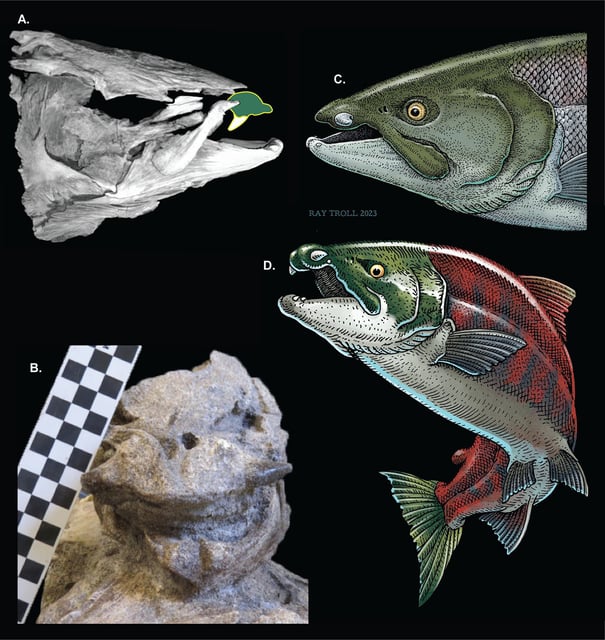Overview
- New research based on fossil findings has led to the renaming of the prehistoric 'sabre-toothed salmon' to 'spike-toothed salmon'.
- Fossils unearthed show that the giant salmon, which lived around five million years ago, had tusks protruding from its jaw rather than fangs.
- The spike-toothed salmon, reaching lengths of up to 2.7 meters, is thought to be the largest salmon species ever.
- These tusks were likely used for nest-building, defense against predators, and possibly in combat with other salmon.
- The discovery challenges previous misconceptions and provides new insights into the capabilities and behaviors of this ancient fish.



